FM 34-81-1: Battlefield Weather Effects
APPENDIX K
WEATHER EFFECTS ON NUCLEAR, BIOLOGICAL, AND CHEMICAL OPERATIONS
NBC operations are extremely sensitive to environmental conditions that affect the transport and diffusion of CB agents. Humidity, air temperature, ground temperature, wind direction and speed, low-level temperature gradient, precipitation, cloud cover, and sunlight are a few of the critical elements to consider when planning NBC operations. The degree of impact depends upon the synoptic situation and the local influence of topography, vegetation, and state-of-the-ground.
The low-level stability of the atmosphere is an important factor in determining whether there will be a good horizontal transport of radioactive or CB clouds. However, stability is not measured directly but is calculated by considering the above weather elements. The WETM or SWO will assist you in making a stability determination. Listed below are weather effects for NBC operations that are not contained in the WTDA tables.
CLOUDS AND SKY COVER. persistent overcast low clouds usually indicate a neutral (favorable) condition, while broken low clouds indicate an unstable (unfavorable) condition during the day and a moderately stable (favorable) condition at night.
HUMIDITY. Humidity has little effect on most chemical agents; however, high humidity destroys some chemical agents such as lewisite and phosgene because of rapid hydrolysis. High humidity increases the effectiveness of HC and phosphorous smokes, some chemical agents, and both wet and dry forms of biological agents. High humidity improves the effectiveness of wet aerosols by reducing evaporation while low humidity assists agent aerosols. High humidity, combined with high temperatures, reduces time in which troops in MOPP gear are effective.
PRECIPITATION. Rain and snow will effect the persistence of chemical agents and may produce radioactive rainout and hot spots. Snow may cover and neutralize certain liquid agents. Rain may even work as a decontaminate. On the other hand, some agents may be very persistent on snow.
STATE-OF-THE-GROUND. Soil conditions impact the effectiveness of chemical agents. Bare, hard ground favors short-term effectiveness and high-vapor concentrations. If the surface is porous, such as sand, the liquid agent quickly soaks in. Vegetative cover reduces exposure to ultraviolet light and favors the survival of wet aerosols. Wet soil degrades the effectiveness of smoke munitions.
SUNLIGHT. A bright sun will shorten the lifespan of biological agents. Sunlight also plays a role in temperature gradients, winds, and temperature (stability).
TEMPERATURE. Some agents are more persistent at low temperatures. Vaporization may be a problem with higher temperatures. Normal atmospheric temperatures have little direct effect on a biological agent aerosol. Sub-freezing temperatures make water-based decontamination methods ineffective.
THUNDERSTORMS AND LIGHTNING. Severe electrical storms will restrict munitions handling because of safety.
WINDS. Winds play a significant role in CB agent dispersion, chemical agent persistence, and aerial delivery methods. Very light and strong winds degrade effectiveness of smoke and NBC operations. Wind direction is considered for fallout pattern determination.
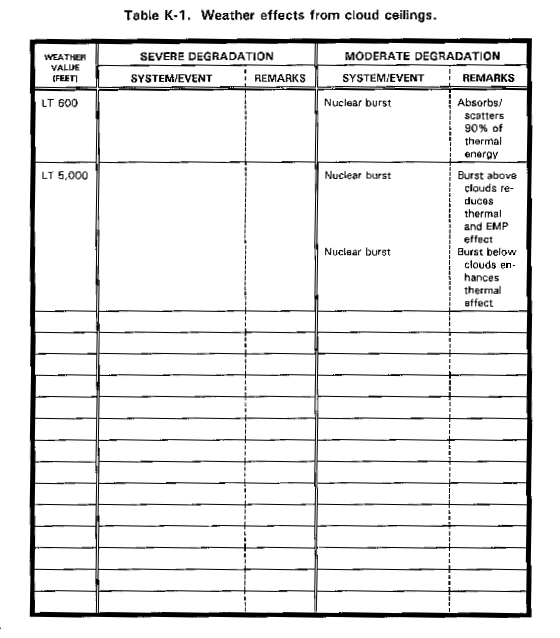
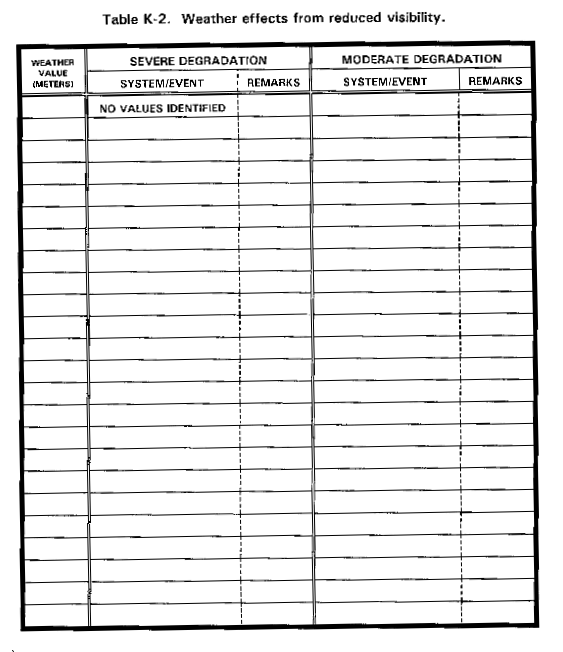
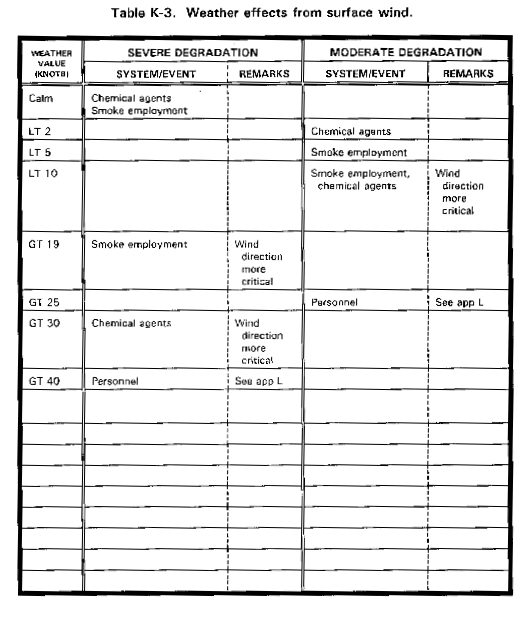
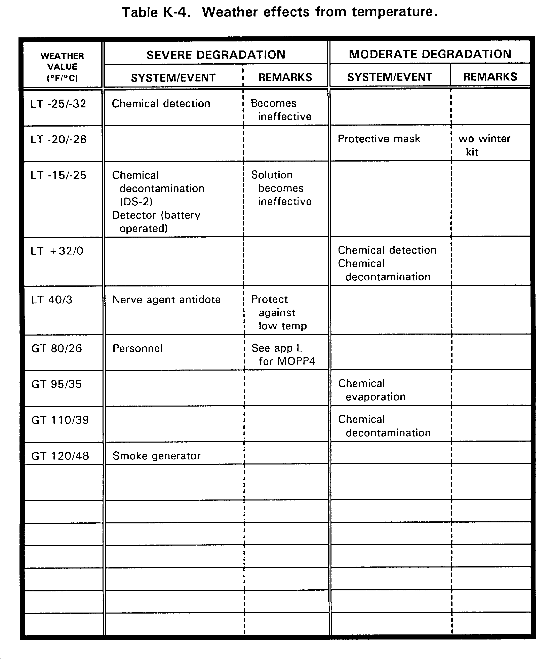
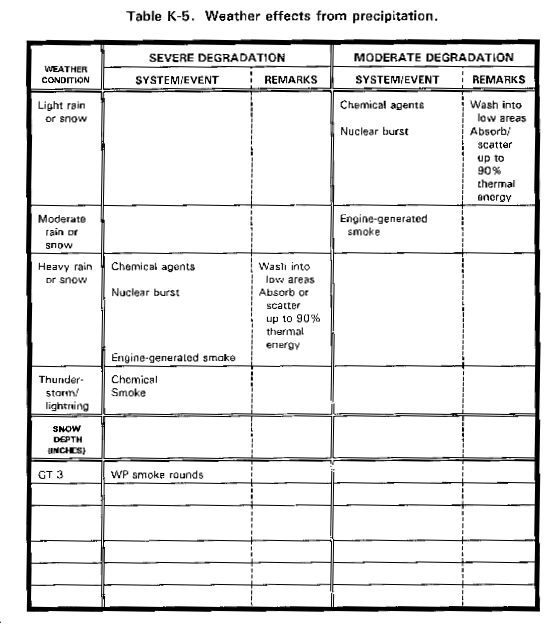
|
NEWSLETTER
|
| Join the GlobalSecurity.org mailing list |
|
|
|

